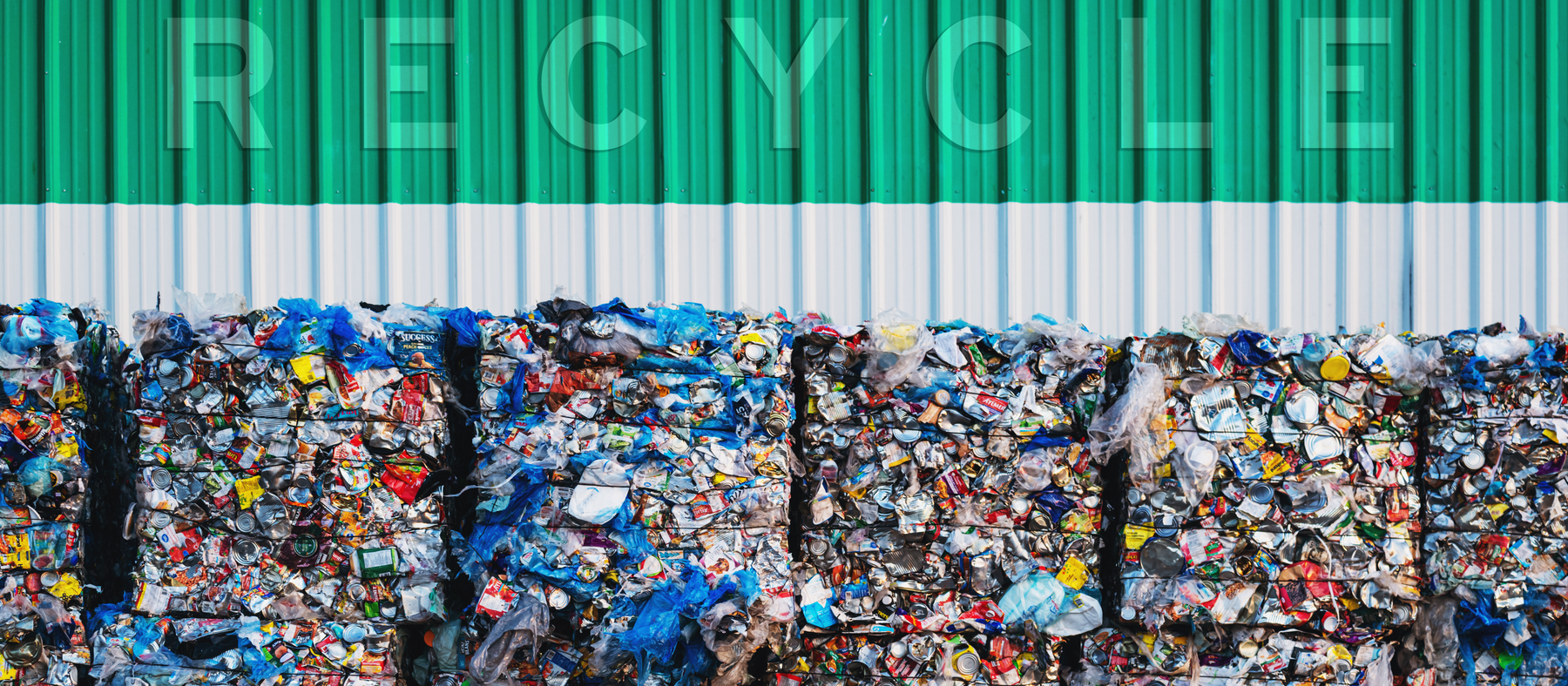
Robbing Our Own Cradle
The following piece was written by Ware's founder, Gillie Roberts, for an Asheville business journal, Capital at Play. It was originally published in June 2019.
[...] I’d like to talk about a system of material production called “cradle-to-cradle”. The term was defined by Bill McDonough and Michael Braungart, an architect and a chemist respectively, in their aptly named book, “Cradle to Cradle”. I’ll explain their industrial proposal and give a nod to a few North Carolina businesses who are already moving in the right direction.
In preparation for their book, McDonough and Braungart took a critical look at the way we make things and pointed out the many flaws with the cradle-to-grave supply chains that we have come to rely on. “Cradle to grave” refers to the timeline on which a product goes from its creation from raw materials to its final disposal. This kind of linear process involves very clear inputs and outputs. Supply chains are siloed. Unquantified waste is the ultimate end product, but not the fabricators’ consideration. With biomimicry in mind, this program is far from natural.
However, Western economies are currently so invested in cradle-to-grave systems, that we go so far as to plan obsolescence into our products. Because, in this approach, a failed product usually means a new purchase. What’s good for business is good for GDP and ultimately good for the country at large. McDonough and Braungart point out the irony that, in using GDP as the measurement for quality of life, we are agreeing that natural disasters, hospital visits, and oil spills are positive contributions insofar as they are all coupled with economic exchanges. Wrap your mind around that for a minute.

We have this industrial infrastructure that extracts materials from the natural biomes, turns them into short-lived products, and then contains them in landfills for the imaginable future. In some cases, trash and “recycling” are sold to foreign countries where they are heavily processed and turned into a lesser quality product (more on that later) or, more often, burned in homes or facilities as fuel. In fact, the book mentions that humans are the only species who take from the soil without ever returning nutrients in a usable form. Not even our dead bodies feed the Earth anymore!
McDonough and Braungart’s antidote to current fabrication systems is a cradle-to-cradle system which avoids waste by designing it out of the process altogether. In a nod to biology, cradle-to-cradle is a circular process whereby the “output” of one system feeds another; in their words, “waste equals food.” They call this circular system the “technosphere,” as opposed to its natural counterpart, the biosphere. In more specific terms, the idea is closed loop manufacturing that uses only materials that can be used and reused to produce the same quality product continually.
You might be thinking, “isn’t that what we’re doing by recycling?” I told you I’d get back to that. The answer is, “no.” Not in the United States, anyway. And not in most countries. Even the sad excuse for recycling that does happen in and by this country is incredibly complex, and it varies drastically from one municipality to the next. Here is the general premise: products and packaging of reclaimable materials are collected by cities and counties, a facility sorts the materials by type (glass, paper, plastic, aluminum, etc.) and compacts the bundles. Then they are sold to companies (largely in China and India) who turn the composite into new product or burn it for fuel.

From a sustainability perspective, this process misses the mark at every step. First on the list is that most vessels we want to recycle aren’t conveniently recyclable in the first place, because they aren’t made of any one material. Soda cans are lined with plastic, paper cartons are also plastic-laden, bottles have paper or plastic film labels that no one removes - materials must be fully separate in order to be used. Did grease get on the paper pizza box? It has to go in the trash. The plastic ring left on the neck of the milk jug is a different type of plastic than the bottle. Which leads me to the subject of lids. You’ve probably been told to toss the lid and recycle the bottle. This is not because the lids are made of a substance that cannot be recycled, but because our compacting machines aren’t meant to process small pieces, and they literally jam up the works. If your city doesn’t require you to separate glass from other recyclable materials, it's likely that much of the softer material you put to the curb goes in with the trash. This is because broken glass imbeds itself in paper and plastic, making those pieces no longer safe or possible to process. This complication has resulted in places like metro Atlanta stopping the collection of glass altogether, even though it’s one of the most cleanly recyclable materials humans are working with. What a conundrum!
Considering the above, it makes sense that the authors of Cradle to Cradle sought a better solution. Those are merely a fraction of the fallacies in the recycling theory, and all before the product even leaves your neighborhood. Skipping forward several stages in the process, you’ve likely heard that China (our biggest customer by no small percentage) is no longer buying recyclables from the U.S. While this is potentially catastrophic for waste management facilities and landfills that are already overflowing around the country, what better impetus for innovation than a country overflowing with single use plastic bottles? Luckily, there are already companies taking matters in their own hands, even in our corner of the country.
There is a growing community of resourceful businesses who are mining the deep caches of plastic bottles around the world and utilizing rPET (recycled polyethylene terephthalate - what most plastic bottles are made of) for textile production. Mount Inspiration and Recover Brands are two such enterprises with Ashevillian roots making tee shirts and activewear with rPET and rPET/organic cotton blends. Recover in particular does a great job of keeping their supply chain transparent, displaying on their website how their textiles, from the recycled cotton to the plastic bottles, are sourced and spun in the Carolinas.
As you might have guessed, McDonough and Braungart don’t shed a particularly positive light on this approach to waste reduction. They remind us that as opposed to true recycling, the approach is more accurately called downcycling. This means the second generation of product made from the resources is in some way inferior (usually quality and durability) to the previous product.
It would be remiss of me not to acknowledge that one concerning way rPET textiles are considered lesser than their first generation materials is that they shed microplastics, releasing unquantifiable amounts of petrochemicals into waterways and ultimately the organisms that consume water. I won’t downplay this significant hazard; I don’t think we understand yet how deeply this is affecting biological systems at every level of the food chain, and it’s already scaring people. However, early solutions are rarely perfect. Even now, we’re finding ways to collect microplastics in washing machines, faucets, and factories. Better solutions are always underway.
In fact, one such solution has just been released. As long as people have been publicly concerned about microplastics, I’ve been jokingly offering to split profits with the person who will engineer a filter that can be retrofitted onto household washing machines to catch ALL solid material that passes, no matter how small. As of June 7th, it exists! Girlfriend Collective, a direct-to-consumer women’s athletic wear line with a cult following, that is made entirely of rPET, just released The Microfiber Filter - for only $45! I’ll be consulting my patent lawyer, but in the meantime, give them a Google. This is huge.

The bottom line is, even if humanity switched to a perfectly closed circular industry tomorrow morning, we would still be left with billions of plastic bottles (among other material waste) to contend with. Because of this, these brands have a long way to go before they’re at risk of running out of material. As long as companies like Recover, Mount Inspiration, and Girlfriend Collective remain agile enough to adapt - and I would argue that their existence alone supports the notion that they intend to be - these are the kinds of solutions that will bridge us from a cradle-to-grave culture to one of a closed, cradle-to-grave goods market and a thriving biosphere. Now, who can I pay to collect the microfibers from people’s washing machines and turn them into seat cushions or something?
In addition to this book and the associated organization that now provides Cradle-to-Cradle certification for products, I invite you to look into the MacArthur Foundation and their education and work around circular economies. Watching Annie Leonard’s “The Story of Stuff” is another great way to begin to wade into a more thorough better understanding of the immense issue at hand.
The book I’ve been referencing was originally published in 2002, meaning its research began long before. This information has been available for some time, but now that people are “feeling the heat” (maybe that joke is too on the nose for current climate circumstances), my hope is that solutions like those proposed in Cradle-to-Cradle will begin to enter boardroom and design room conversations.

Comments
Leave a comment